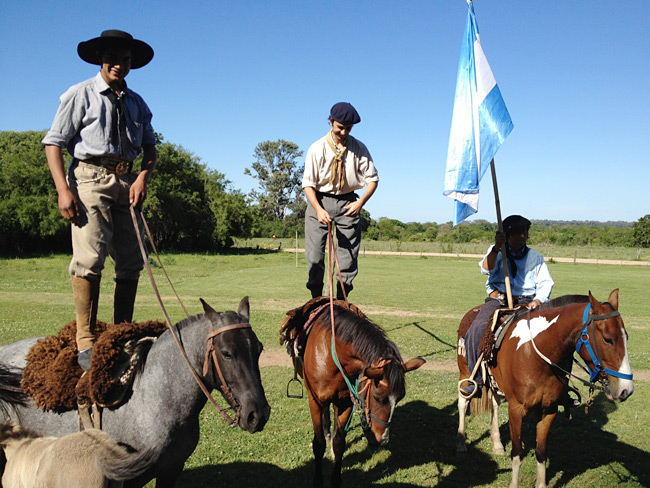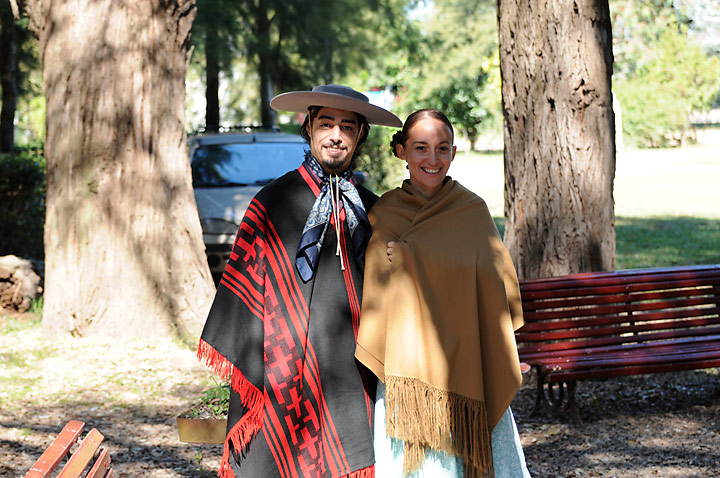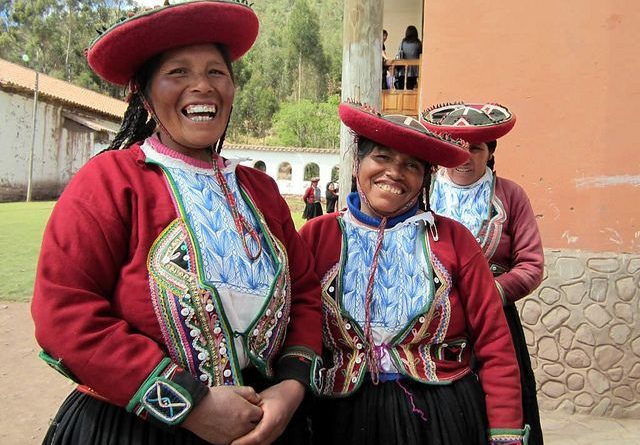Traditional Argentinian Clothing
There are many people in Argentina, mainly in the countryside areas, who wear the traditional gaucho costumes. Gaucho is the name given to the cowboys of South American countries, which include Argentina, Uruguay, and Brazil. Some people in the city areas also wear this costume, but it would be a mistake to assume that all people in Argentina always wear these types of clothes – they do not.

As with most countries, there is an eclectic mix of clothing that people wear on a day to day basis, with people following latest fashions and trends, those who wear classic clothes, and those who prefer to wear traditional outfits, or elements of traditional costumes with more modern touches.
Typical footwear in Argentina includes the alpargatas. This is a shoe made from canvas with a rope sole. Sometimes, the sole may be rubber. This style of shoe comes in a wide variety of different colours and patterns. They are very sturdy and strong and last well. These features made these shoes very popular in particular with people who worked outdoors and needed durable footwear.

Men often wear trousers called tje bombachas de campo, although they are unisex and so may also be worn by women. These are favoured for activities such as horse riding because of the durable and long lasting nature. They are made from pure cotton, and are strong and resilient. They are usually made in neutral colours. They have a button at the bottom of each leg to allow the wearer to narrow them if required. They are very comfortable. They are also very functional and practical.

The trouser-like items called gauchos are similar to Capri pants, stopping before they reach the ankle. They are mainly worn by women.
Floral patterns feature heavily in the traditional clothes from Argentina.
The ceibo is the national flower emblem and is used a lot for decoration, both in clothing and for other items.
Woollen ponchos are worn by both men and women. Various wools can be used to make the ponchos, and they are available in a wide range of colours and patterns. A poncho is a unisex item of clothing. There are no arms, rather it goes over the head and sits around the neck, with the length covering the upper part of the body as well as the arms. People in Argentina wear a poncho to help keep them warm and protect them from cold winter weather.

Apron-like garments are often worn by men. These are functional and protective. They fasten with a buckle, and are long, reaching almost to the floor. This item is called a tirador.
Men usually wear a white shirt, with the sleeves rolled up. There is a darker item similar to a waistcoat, and a loose necktie. This tie can be in a range of colours.
Wide brimmed hats are also a part of the traditional Argentinean costume. They help to protect the face and eyes from strong sunlight and are worn by both men and women.
The traditional costumes may be worn by people from all parts of the country for special occasions, including weddings, festivals, heritage events, and other celebrations. Standards of dress are more rustic, authentic and traditional in the countryside areas. The further into rural areas one ventures, the more traditional the clothes they will see. Many countryside dwellers still tend to wear traditional Argentinean clothes today.
There are several museums across the country with exhibits of national costumes and traditional outfits. They are very interesting to see, especially how the styles and patterns have changed over the years.
In the major towns and cities, the everyday standards of dress are very similar to European and American countries. People wear dresses, skirts, jeans, and t-shirts. Football kits showing support for the national team are also popular.
Formal office wear is typically a shirt and suit for men and smart professional attire for women. This may include skirt suits, dresses and jackets, trouser suits, and a smart blouse with a skirt or trousers. Women in particular are often very proud of their appearance, and will take great pains to make sure that they look chic, elegant, attractive, and presentable. Accessories are often used to add colour and flair to outfits.
 Various different cultures have played a part in the customs in Argentina, including the typical dress and clothing. Spanish influences in particular can be seen, due to the country coming under Spanish colonial rule from the 16th century to the early 1800s. There are also strong influences from the Italian cultures. Most Argentineans identify more with being European rather than South American. The dress therefore is quite different to other South American countries, which all share many common features.
Various different cultures have played a part in the customs in Argentina, including the typical dress and clothing. Spanish influences in particular can be seen, due to the country coming under Spanish colonial rule from the 16th century to the early 1800s. There are also strong influences from the Italian cultures. Most Argentineans identify more with being European rather than South American. The dress therefore is quite different to other South American countries, which all share many common features.
